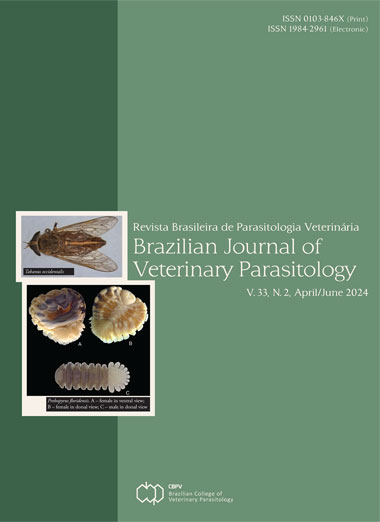Sarcoptic mange or scabies is a contagious parasitic skin disease that affects a wide range of domestic and
wildlife species. A cross-sectional study was carried out to determine the prevalence, molecular identification, and
characteristics of sarcoptic mange in vicuñas. A total of 3,274 vicuñas were examined. Following ritual harvesting
events (“chaccus”) in 13 Andean communities. The presence of mange mites was determined by the skin scraping
technique and confirmed by PCR analysis using specific primers for the ITS2 gene of Sarcoptes scabiei. The presence
of mange mites was also confirmed by microscopy using samples taken from wallows. A data collection form was
used to register the characteristics of the vicuñas sampled. The prevalence of sarcoptic mange was 4.9% (95% CI:
4.1 – 5.6%). All samples from wallows tested positive (9/9). Importantly, the presence of the species S. scabiei was
molecularly confirmed. Adult females with regular body condition were more susceptible to sarcoptic mange,
although the lesions were mild. This study confirms the presence of S. scabiei in semi-captive vicuñas and points
to the possible role of wallows in the dissemination of Sarcoptes mites.
Epidemiology of sarcoptic mange in free-ranging vicuñas (Vicugna vicugna): a cross-sectional study in Andean highland communities in Peru
Citation: Serrano-Martínez ME, Bazán AG, Enciso M, Huanca MF, Llanco AL, Haan S, et al. Epidemiology of sarcoptic mange in free-ranging vicuñas (Vicugna vicugna): a cross-sectional study in Andean highland communities in Peru. Braz J Vet Parasitol 2024; 33(2): e020523. https://doi.org/10.1590/S1984-29612024030
2024-06-21
PERU
journal_article


